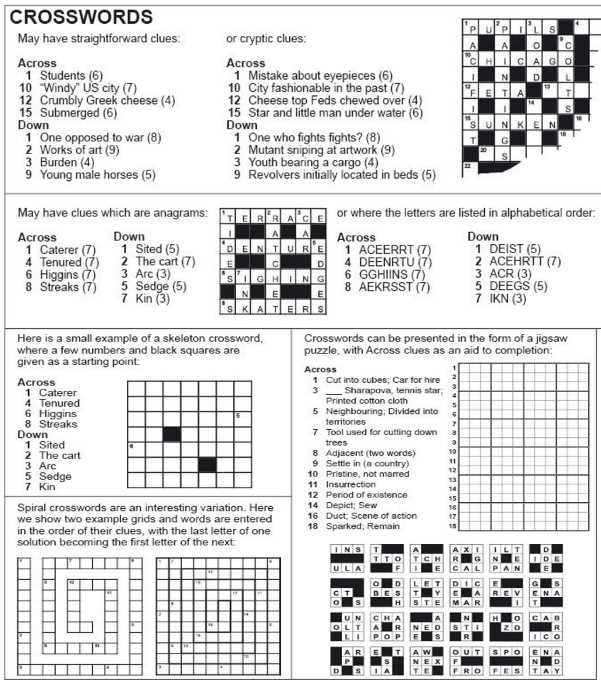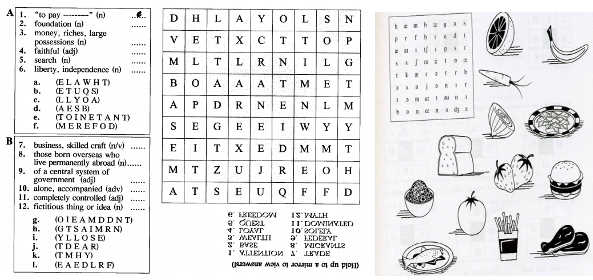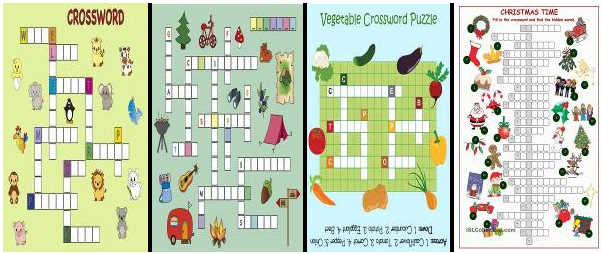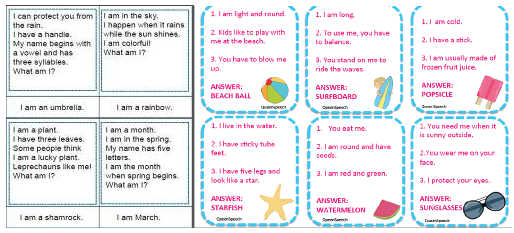Using Motivational Games to Promote Students’ Participation
Mai Tran Thi Thanh is an English lecturer at Van Lang University, Vietnam. She is interested in methods in teaching English as a foreign language to various levels of learners, especially to college students. E-mail: thanhmai1985@gmail.com
Introduction
Using games is advantageous to any language level classes though it may serve different purposes and may be used in different ways. Various studies have been conducted on the role of “play” in language learning and how learning could occur with the help of games (Azarmi, 2011). Not surprisingly, many researchers and educationalists support the use of language games in the classroom for a numerous benefits. One of these advantages is that learners are motivated to learn the language when they are in a game. McCallum (1980:ix) considers games as a stimulating factor to arouse students’ interest and one of the highest motivating techniques. Similarly, Wright, Betteridge, and Buckby (2005) also remark games as an effective means of sustaining students’ interest.
Students’ anxiety towards language learning decreases as games are employed is another advantage associated with games. According to Crookal (1990:112), in language classes, learners feel stressful because they think that they have to master the target language that is unknown to them. Besides, learners become too anxious about being criticized and punished by their teachers when they make a mistake. Games are advantageous at this point because they reduce anxiety, increase positive feelings and improve self-confidence because learners have no fear of punishment or criticism while practicing the target language freely.
As far as learners’ involvement is concerned, Crookall (1990) concludes that learners and teachers change their roles and relations through games and learners are encouraged to take active role in their learning process. As a result, games provide learners with a chance to direct their own learning. Sharing with Crookall’s findings, Cross (2000:153) states that when learners completely focus on a game as an activity, they acquire language in the same way that they acquire their mother tongue, i.e. without being aware of it. To state this differently, by putting learners in real life situations, games make a connection with the real usage of language (Celce-Murcia, 1979:54). Deshpande (2008:28) also contributes that games can capture the attention of the students because players think deeply how to win and get good scores and this motivates them and make the lesson more interesting.
Using games in classrooms, according to Lee (1995), can facilitate English learning in many perspectives, i.e. providing opportunities for target language practice, facilitating students’ communication, and creating a real life situation for using language. Two years later, Phillips (1997:85) adds that playing games in the classroom enables to develop the ability to cooperate, to compete without being aggressive, and to be a good loser.
What is more, in terms of social relationship, Jacobs and Kline Liu (1996) and Ersoz (2005) mention that games develop students’ social skills in co-operating with others as well as build up team spirit. Contributing to the role of games, Harb (2007:37) asserts that through games, students learn much information, facts and concepts about people and things. Harb (2007:37) supplements that the main goal of game activities is enjoyment. Games enhance the social and affective aspects of the students' character. Moreover, games are a tool of expression. Students can express their thoughts, ideas, feelings, emotions and aptitudes through games.
To sum up, games have a great pedagogical value providing language teachers with many advantages when they are used in foreign language classes. The review of the studies related to language games indicates that games are crucially important in foreign language teaching and learning in a variety of areas. Therefore, it is important that teachers should not see games as time fillers or tools designed for fun only, but integrate them into their foreign language teaching programs.
Some suggested motivational games
Puzzles
There are many types of puzzles, i.e. crossword puzzles; word search puzzles; codeword puzzles; word fit puzzles; sequence puzzles; picture puzzles; number puzzles; Sudoku puzzles; logic puzzles; and occasion puzzles. Of all these kinds of puzzles, crossword puzzles, word search puzzles as well as picture puzzles are favorable and popular in language teaching and learning.
Crossword puzzles
A crossword puzzle, according to Wahyuningsih (2009), is a game in which words, guessed from their definitions, are fitted into a diagram of white and black squares. The crossword has words written horizontally (across clues) and words written vertically (down clues). The pattern of black squares usually serves to separate each word from adjacent words (Wahyuningsih, 2009). Correctly deciphering a crossword requires correct spelling, which for students may mean practising dictionary skills. Making inferences, evaluating choices, and drawing conclusions are important skills required for completing crossword puzzles (Wahyuningsih, 2009).
Bressan (1970) and Wolfe (1972) have attempted to classify the kinds of crossword puzzles according to the clues used. Bressan discusses two main categories: direct-definition clues and cryptic clues. Direct definition clues include generic, synonymic, antonymic, definitory, and descriptive clues. Cryptic clues include anagrams, word inversions, double meanings and so on. Most second language puzzles use clues from the direct-definition clues, although cryptic clues in the form of anagrams occasionally appear. Bressan (1970, p. 94) argues that crossword puzzles, among other things, enhance vocabulary building, orthography and develop and test the student's knowledge of morphology.
Clues for crosswords are variable ranging from straightforward clues, cryptic clues to clues which the letters are listed in alphabetical order. Furthermore, crosswords may be in the form of skeleton puzzles, jigsaw puzzles, or spiral crosswords.

Word search puzzles
A word search puzzle is a word game that consists of the letters of words placed in a grid, which usually has a rectangular or square shape. The objective of this puzzle is to find and mark all the words hidden inside the box. The words may be placed horizontally, vertically, or diagonally. Often a list of the hidden words is provided, but more challenging puzzles may let the player figure them out. There are some interesting variations for word search puzzles. It may include definitions and its relevant words which the letters are listed in the wrong order; then learners have to do the matching task first and locate the words in the word search grid. The interesting thing is that they will hold the grid up to a mirror to see the answer. Another option for word search puzzles is given picture clues and student will circle the word. More challenging, learners are asked to circle the words without any clues but a given theme, i.e. “jobs”, “nature” and so on.

Picture puzzles
This kind of puzzles offers picture clues for learners to recall vocabulary or look up new words. Often, it includes a specific theme and is favorable to vocabulary teaching or consolidation. To challenge students, teachers can design a new picture puzzle with a hidden word.

Guessing games
Guessing games can be used as free activities for revision of vocabulary or as an interesting way to give quite controlled practice. Although they are called “games”, they provide intensive language practice, especially in asking questions, so they should not be regarded as an extra activity. Students are fond of these guessing tasks mainly because they enjoy themselves without realizing they also practise and improve their speaking skills.
This activity is very similar to a describing game. Students can also be divided into groups or pairs. They are given three categories of words or phrases. A set of cards face down or in an envelope is given to each group. The teacher demonstrates the activity by choosing a word from one of the vocabulary sets and describing it to the class until someone guesses the word. The most important thing is that students cannot use the word on the card in their definitions. Learners play the game taking turns. The teacher tells students to do not interrupt anybody’s description
Word guessing games (riddles)
Riddles show up the playful nature of language in an easily manageable form. Riddles can be difficult or simple depending on learners’ levels and interests. Teachers can first play with the whole class and then try in groups (good for mixed ability groups).
+ “Three eyes have I, all in a row;
when the red one opens, all freeze.” (The answer is traffic light)
+ “You throw away the outside and cook the inside.
Then you eat the outside and throw away the inside.
What did you eat?” (An ear of corn)


Guessing a person games
This is a fun activity for describing people, the teacher or the students select a person beforehand and without revealing her name, hand in the paper with the description to other students whose job is to find this mysterious person and ask him or her a couple of personal information questions. Students always rush to be the first in finding it.
Students ask yes/no questions about the people whose photos or written descriptions they have (“Is it a woman?” “Does she have long hair?” “Does she have a high pressure job’”) until they guess which person their partner was thinking of.
Students write 10 sentences about themselves and then pass the piece of paper to someone else. The person who received the paper reads the sentences out, starting with the most difficult clues to guess from, until everyone guesses who it refers to.
People describe one person or make generalizations about someone from a particular country, and the others try to guess the nationality. You can do the same thing with regions of their country. This can lead onto language of generalization such as “Most people think that…” or “People in this country tend to…”, which is good for speaking exams such as IELTS, or discussion of the truth and acceptability of stereotypes.
Give students a very short description of someone, e.g. “He has hair”. They then take turns to make that sentence longer and longer, until someone makes a mistake or gives up.
Simon says
Simon Says is a fun game that helps in exercising listening skills. This game is fairly easy, but it can quickly turn into a challenge, especially if playing in a large group. Although this game goes by many names worldwide, the fun, basic rules tend to remain the same.
Simon’s commands can be given in two different ways: beginning a command by saying, “Simon says…” or simply stating the command. Simon’s goal is to eliminate as many listeners as possible, until there is one listener remaining as the winner. Because “Simon” is trying to eliminate as many listeners as (s)he can, the teacher should try and make her/his commands tricky to follow. For example, frequently switch up when you give commands preceded with “Simon says…”. Give your commands quickly so your listeners have to make quick decisions on whether to obey your command or not.
Word chain
Going to the moon. This is a guessing/deductive game in which the first person establishes a word pattern for everyone else to figure out. He or she says, “I’m going to the moon and I’m going to take (name an object).” Everyone else follows by repeating the same phrase but naming a different object with the same pattern. Patterns could include words that start with the same letter as the speaking person’s name, words with double consonants, or words that begin with the last letter of the previous word.
Snake-word. To check how rich students' vocabulary is, the teacher can have them play the snake-word game. Each row or team sends a representative to the blackboard. He/she chooses a colored piece of chalk and they stand in a line. The teacher writes a letter and the first student must write a word beginning with that letter; the following student writes a word beginning with the last letter of the previous word. They should write the words so that they make a snake. Time is limited depending on the level of the class, e.g. D Data Amount Tomato Onion Narrow Wish........
City versus countryside. For this activity, the teacher should divide the class into two main groups, i.e. one group starting with “I went to the city and I saw…” and one group starting with “I went to the countryside and I saw…”. Each member of the groups will add a word related to the city or the countryside in turn. It is worth noticing that the latter student has to remember the former student’s word and add another word until the last student of each group finishes the task, as follow:
Nga (group A) says, “I went to the city and I saw a museum”. Then, Hưng (group B) states, “I went to the countryside and I saw a buffalo”. After that, Mai (group A) utters, “I went to the city and I saw a museum and a cinema”. Continuously, Thao (group B) says, “I went to the countryside and I saw a buffalo and a bamboo.”
Drawing games
One person explains a picture of a person or objects to their partner and their partner tries to draw what they hear. This can be done with the person explaining being allowed to see it being drawn or (more difficult) not being able to see and just having to ask and answer questions to make sure they have got it right. It can also be done with the original picture being a line drawing or a photo, with the former obviously being much simpler.

(Adapted from Outcome-elementary by Huch, D & Andrew, W. 2011)
Points to think about when using motivational activities to involve students in class
Hong (2002:1) states that "Teachers need to consider which games to use, when to use them, how to link them up with the syllabus". According to Deesri (2002:2), when teachers want to choose certain games to be played in the class, they should first consider the games' purpose, students' characteristics whether they are old or young, and the suitable time of playing the game. Some games should be used in the morning, others in the afternoon and others on Friday.
To implement games in English class, teachers should consider numerous factors. One is choosing appropriate games to a group of learners. Ampaipan (1999) proposes six criteria for selecting games. There are a number of students in class, places, i.e. inside or outside class, level of age, i.e. children, teenagers or adults, level of English proficiency, i.e. beginner, intermediate or advanced learners, duration and the content, i.e. English skills, the difficulties of language. In addition, teachers should further consider how to implement games to class. Reese (1999, cited in Sripramong, 2004) suggests that games can be used in English class for two purposes. The first is to activate background knowledge in presentation stage such as, matching picture with target vocabulary. Secondly, it is used to practice English skills or learn particular grammar in practice stage such as, using spelling games to teach vocabulary.
To exploit games in the process of teaching and learning English, teachers should take these points into consideration. The first thing is that the games must have a clear learning objective and purpose. It should be clear what the students are learning and practicing in the activities and procedures of the game.
Another point should be taken into account is the fact that teachers should assign students to teams or groups. Try to separate the smartest or best and also those that struggle the most so each team has a fair chance. This will also allow those that are struggling to learn from the ones who are more secure and confident about what they have learned. Random grouping is not recommended because often one group may have an unfair advantage intellectually, or students will choose to work with their friends. Obviously, the latter option does not usually promote much discourse about the language or learning in general.
Apart from dividing the class into subgroup, it is crucial for teachers to explain all necessary procedures and rules clearly and slowly. Make sure everyone is listening and understands. If necessary, ask the students to restate them. With games that have been played before, ask the students to state the rules and procedures prior to beginning game play.
Time is also equally important. Make sure that everyone has the same amount of time to answer. Do not start another round if all the teams will not have a chance to go before class ends. Decide if only the first answer will be accepted because sometimes students say things incorrectly, realize it after they say it and then fix it.
Last but not least, anticipate the unexpected such as an assembly, absent students, extra or not enough time and maintain a non-threatening environment. All standard classroom rules and procedures should be observed when playing games. Not surprisingly, during the games some students become emotionally charged and may react negatively, especially if the outcome is not what they expected. Before playing a game, teachers should discuss how to treat and talk to others by common consent.
References
Deesri, A. (2002). Games in ESL and EFL class. The Internet TESL Journal, vol. VIII, No.9
Harb, A. (2007). The effectiveness of educational games on the sixth graders’ achievement in English language in Gaza Southern Governorates. M.A thesis, the Islamic University of Gaza, Gaza.
Hong, L. (2002). Using games in teaching English to young learners. The Internet TESL Journal, vol. VIII, No.8.
Lee, W. (1995). Language teaching games and contests. Oxford: OUP.
Harmer, J. (2007). The Practice of English Language Teaching. Pearson Education
Rixon, S. (1981). How to use games in language teaching. London: Modern English Publications.
Wright, A., Betteridge, D. & Buckby, M. (1984). Games for language learning. Cambridge: CUP.
Please check the Creative Methodology for the Classroom course at Pilgrims website
Using Motivational Games to Promote Students’ Participation
Mai Tran Thi Thanh, Vietnam